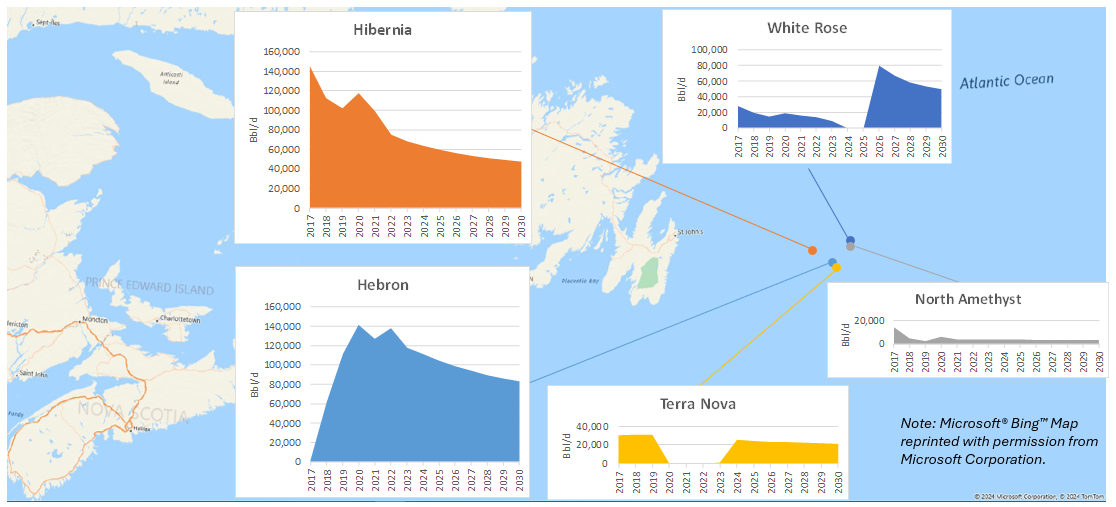July 11, 2024
Canadian Offshore oil production, located east of Newfoundland, grew rapidly from 220 to 260 MBbl/d in 2019. Offshore production has since dropped to 200 MBbl/d in 2023 due to well declines for all projects.
Primary offshore fields:
- Hebron: Production grew from just 2,000 Bbl/d in 2017 to over 140,000 Bbl/d in 2020. Production fluctuated between 118,000 and 138,000 Bbl/d into 2023 and is expected to gradually decline through the forecast from 118,000 Bbl/d in 2023 to 83,000 Bbl/d in 2030. There are no expansion plans.
- Hibernia: Hibernia had the highest production levels in 2017 at 145,000 Bbl/d in 2017 but have gradually declined to just 68,000 Bbl/d in 2023. There are no expansion plans.
- North Amethyst: Production started at 14,000 Bbl/d in 2017 declining to about 4,000 Bbl/d over the past 3 years. There are no expansion plans.
- Terra Nova: Terra Nova averaged about 31,000 Bbl/d from 2017 through 2019. Production was suspended from 2020 to 2023 to perform necessary repairs. Production resumed in 2023 and is expected to gradually decline from over 24,000 Bbl/d to about 21,500 Bbl/d in 2030.
- White Rose: Production levels declined from over 28,000 Bbl/d in 2017 to 9,000 Bbl/d in 2023. In 2026, a new project for oil production of 80,000 Bbl/d is expected. The project includes a fixed drilling rig tied back to the existing White Rose (SeaRose) FPSO.
Offshore Oil Production by Field

Hibernia and Hebron are the 2 largest offshore plays in Canada. These 2 fields accounted for over 90% of Canada’s total offshore oil production in 2020 with market share dropping to about 65% in 2030.
See Also:
Canadian Oil Production Forecast to 2035
Alberta Oil Production Forecast to 2040 (excl Oil Sands)
Canadian Oil Exports by Rail 2012-2023
Canadian Weighted Gross Revenue by Company 2022
Royalty Rate by Company 2022
References:
C-NLOPB Statistical Information, 2023
CBC News, October 12, 2023
CBC News, May 9, 2023

